Common name: fallow deer
Scientific name: Dama dama
Family: Cervidae
Habitat: broadleaved woodland, grassland and parkland
Diet: grass, leaves, bark, nuts and berries, fungi
Predators: no natural predators
Origin: non-native
A social, elegant species with a signature speckled coat and mighty palmate antlers. First introduced by the Romans, fallow deer became extinct in Britain until they were reintroduced before the Norman Conquest around the year 1,000.
Common name: fallow deer
Scientific name: Dama dama
Family: Cervidae
Habitat: broadleaved woodland, grassland and parkland
Diet: grass, leaves, bark, nuts and berries, fungi
Predators: no natural predators
Origin: non-native
Typically, fallow deer have a light chestnut-brown coat with white spots during the summer and a duller grey-brown coat in the winter. However, it is not uncommon to see deer with darker brown and even black fur. Occasionally, some fallow deer are born with white coats.
The species has a white rump with a distinctive black horseshoe outline and white-fringed tail. Fallow deer grow to around 90cm tall. Bucks (male deer) grow distinctive palmate (palm-like) antlers which are shed and regrown yearly, becoming increasingly elaborate over the deer’s life.
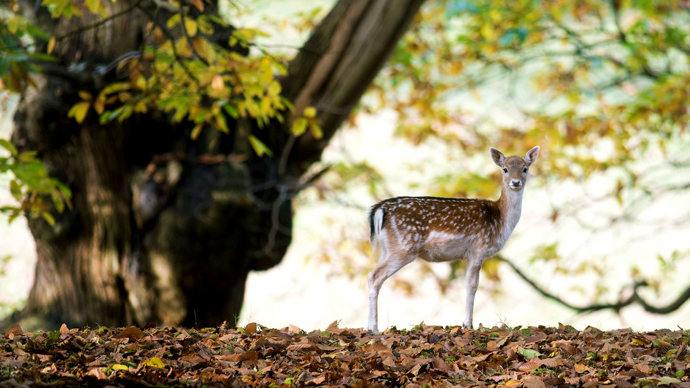
Credit: David Foker / WTML
Fallow deer graze on grass, herbs and leaves during the summer and eat bark, fungi, nuts and berries during the winter.
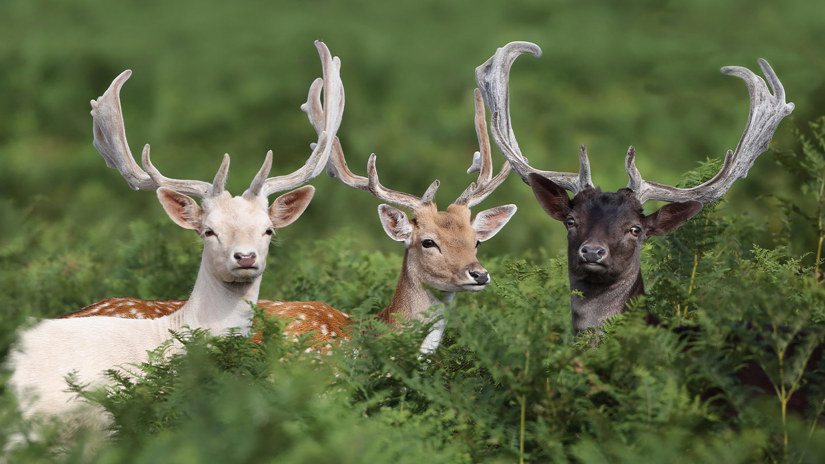
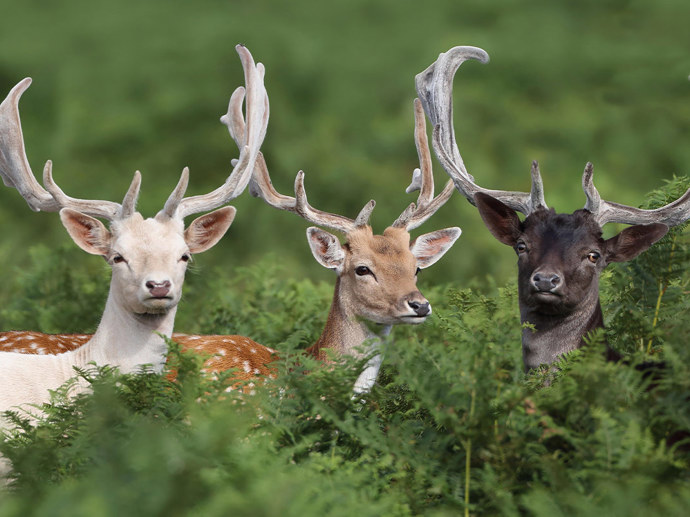
James Martin • 03 May 2019
From the dainty muntjac to the mighty red stag, the UK is home to six species of wild deer. Learn more about these fascinating creatures.
Bucks have pronounced Adam’s apples which move dramatically as they bellow during mating displays.
In the wild, fallow deer live in small herds, while park deer gather in larger groups of up to 70 individuals. Outside of the rutting season, which takes place in October, bucks form separate herds away from does (female deer) and young.
During the mating season, bucks establish and maintain ‘rutting stands’ – territories they set out by urinating and marking soil with their hooves and antlers. They thrash foliage with their antlers and call loudly to indicate their prowess and attract as many females as possible to mate with. Bucks fight fiercely over the groups of does they herd onto their territory and will use their antlers to charge and clash with competing males.
After a gestation of around 230 days, adult does give birth to a single fawn in June or July. They are usually able to breed after a year.
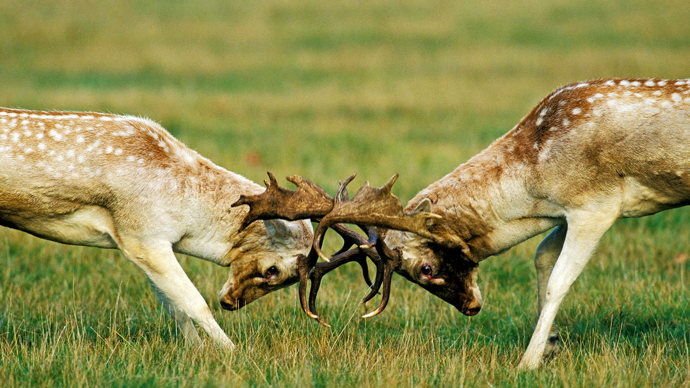
Credit: David Kjaer / naturepl.com
Fallow deer are widespread across England, Wales, southern Scotland and Ireland. They favour broadleaved woodland, grassland and parkland.
Fallow deer were first brought to Britain by the Romans over 1,000 years ago, and were a favourite quarry of medieval huntsmen.
Groups of fallow deer can often be spotted in woodland glades and parkland. While they can be sighted throughout the day, the best time to see them is during dusk and dawn, when they are most active.
During the mating season, listen out for the powerful groans of bucks – a sure sign that fallow deer are nearby. Also, keep an eye on the ground for any fallow-deer tracks – they leave large, long hoof prints in soft ground.
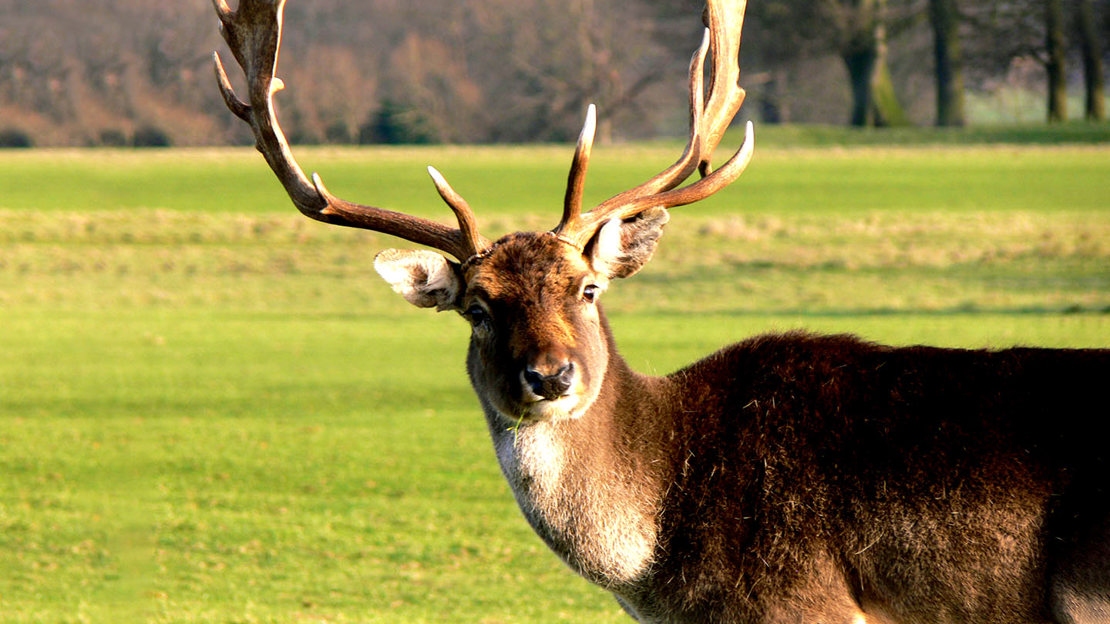
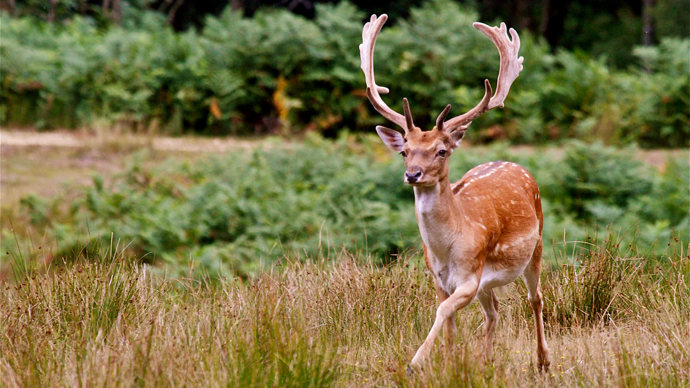
Credit: Tony Cox / WTML
Fallow deer have no natural predators in the UK. As a result, deer densities can reach extremely high levels. It is thought deer numbers are higher now than at any point in the past 1,000 years - with a potentially negative impact on the environment. Over-grazing can prevent the re-generation of woodland, which has knock-on effects for other species. As a result, some populations are culled to control their spread and reduce damage.